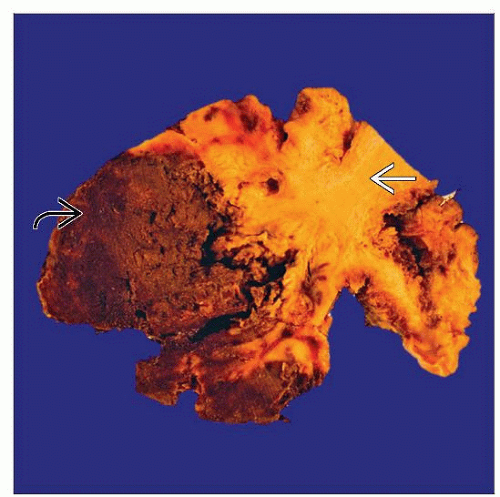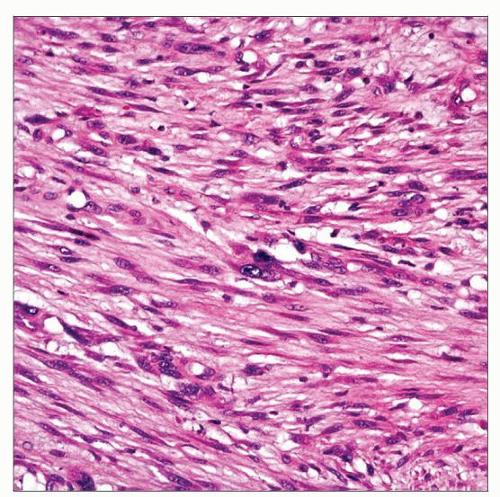Sarcomatoid Carcinoma, Penis
Elsa F. Velazquez, MD
Antonio L. Cubilla, MD
Key Facts
Terminology
Synonyms
Spindle cell carcinoma, carcinosarcoma
Macroscopic Features
Large polypoid mass usually affecting glans, coronal sulcus, and foreskin
Deeply invading into corpora spongiosa and cavernosa
Separate satellite nodules may be present
Microscopic Pathology
Predominantly composed of atypical spindle cells disposed in interlacing fascicles
Myxoid changes may be marked
Pseudovascular spaces may be prominent mimicking angiosarcoma
Carcinoma in situ or clear-cut invasive SCC may be only very focally present
Ancillary Tests
Immunohistochemical studies are often necessary to make diagnosis
Spindle cells are positive for vimentin, cytokeratins, and p63
Cytokeratin expression (especially PAN-CK[AE1/AE3] and Cam5.2) by spindle cells may be only focal
PAN-CK(AE1/AE3) and HMCK(34βE12) tend to be more diffusely expressed by spindle cells
Top Differential Diagnoses
Spindle cell melanoma
Sarcoma
TERMINOLOGY
Abbreviations
Sarcomatoid squamous cell carcinoma (SCC)
Synonyms
Spindle cell carcinoma, carcinosarcoma, metaplastic carcinoma
Definitions
Undifferentiated carcinoma arising from squamous epithelium composed of malignant spindle cells
ETIOLOGY/PATHOGENESIS
Pathogenesis
Uncertain
HPV association unknown; unlikely
CLINICAL ISSUES
Epidemiology
Incidence
Approximately 4% of penile SCCs
Age
Mean is 60 years
Site
Glans, often extending to coronal sulcus and foreskin
Presentation
Large, polypoid, and ulcerated mass deeply invading corpora spongiosum and cavernosa
Treatment
Surgical or multimodal
Prognosis
Usually associated with lymph node metastasis
Poor prognosis
MACROSCOPIC FEATURES







